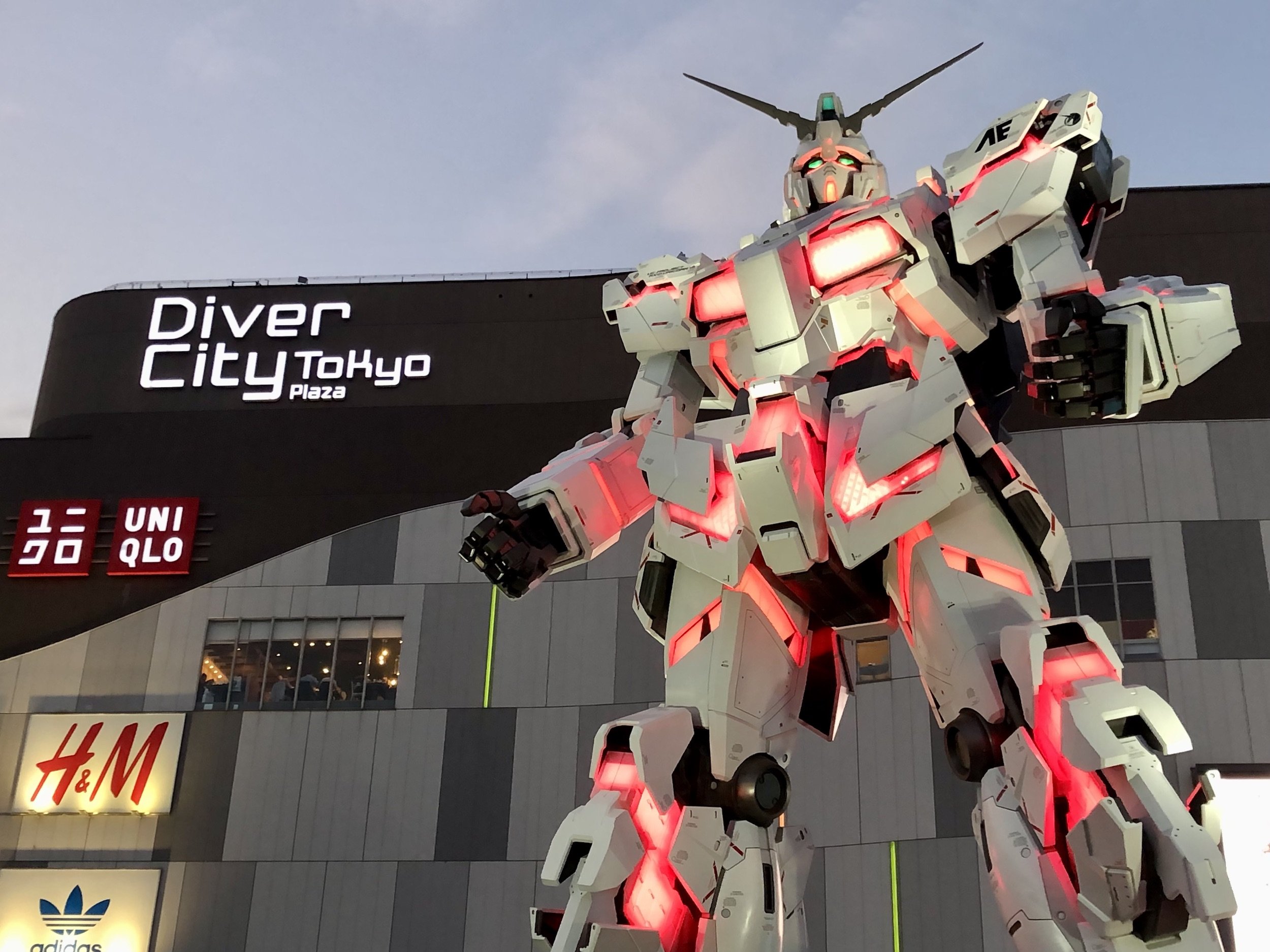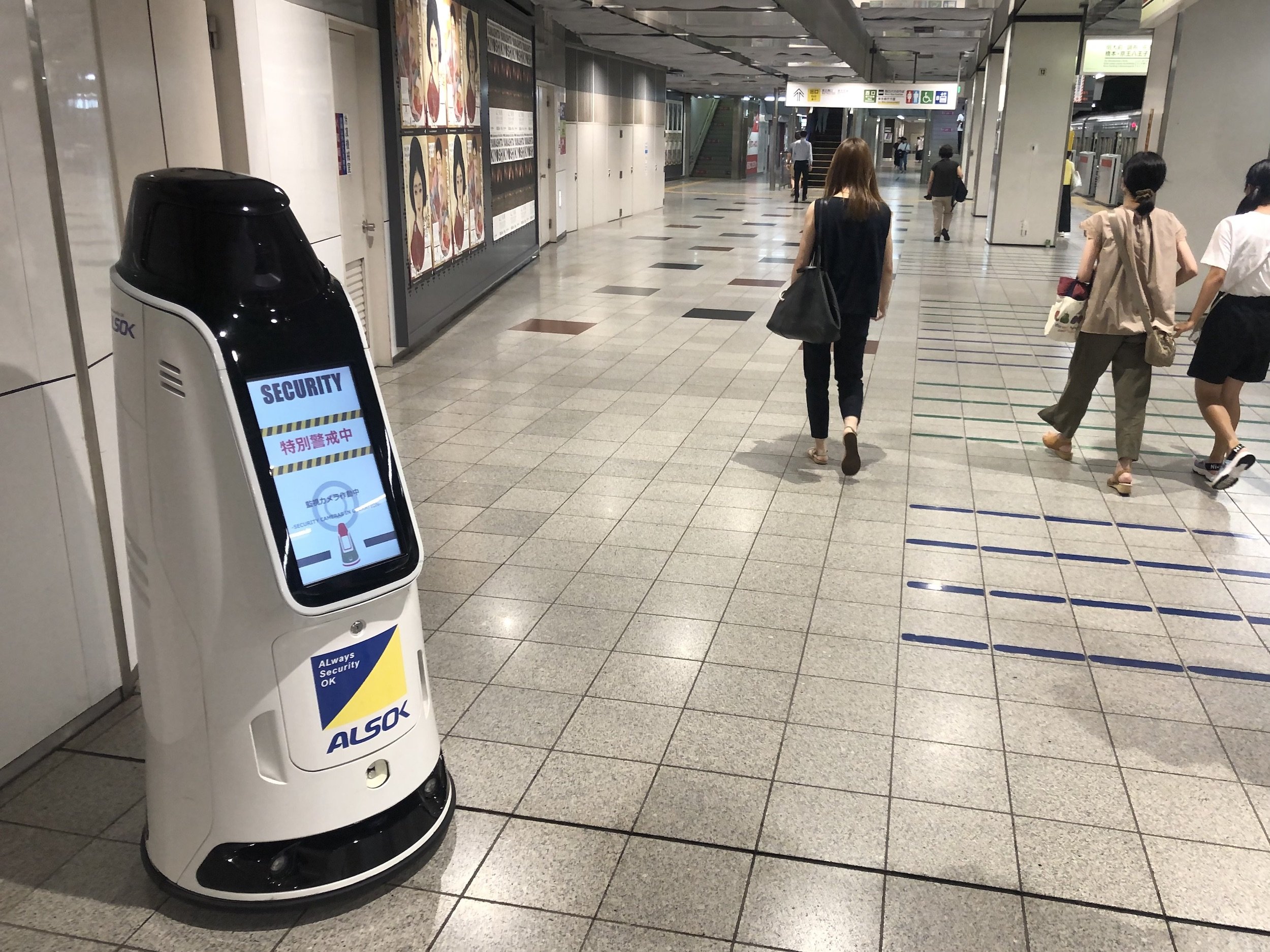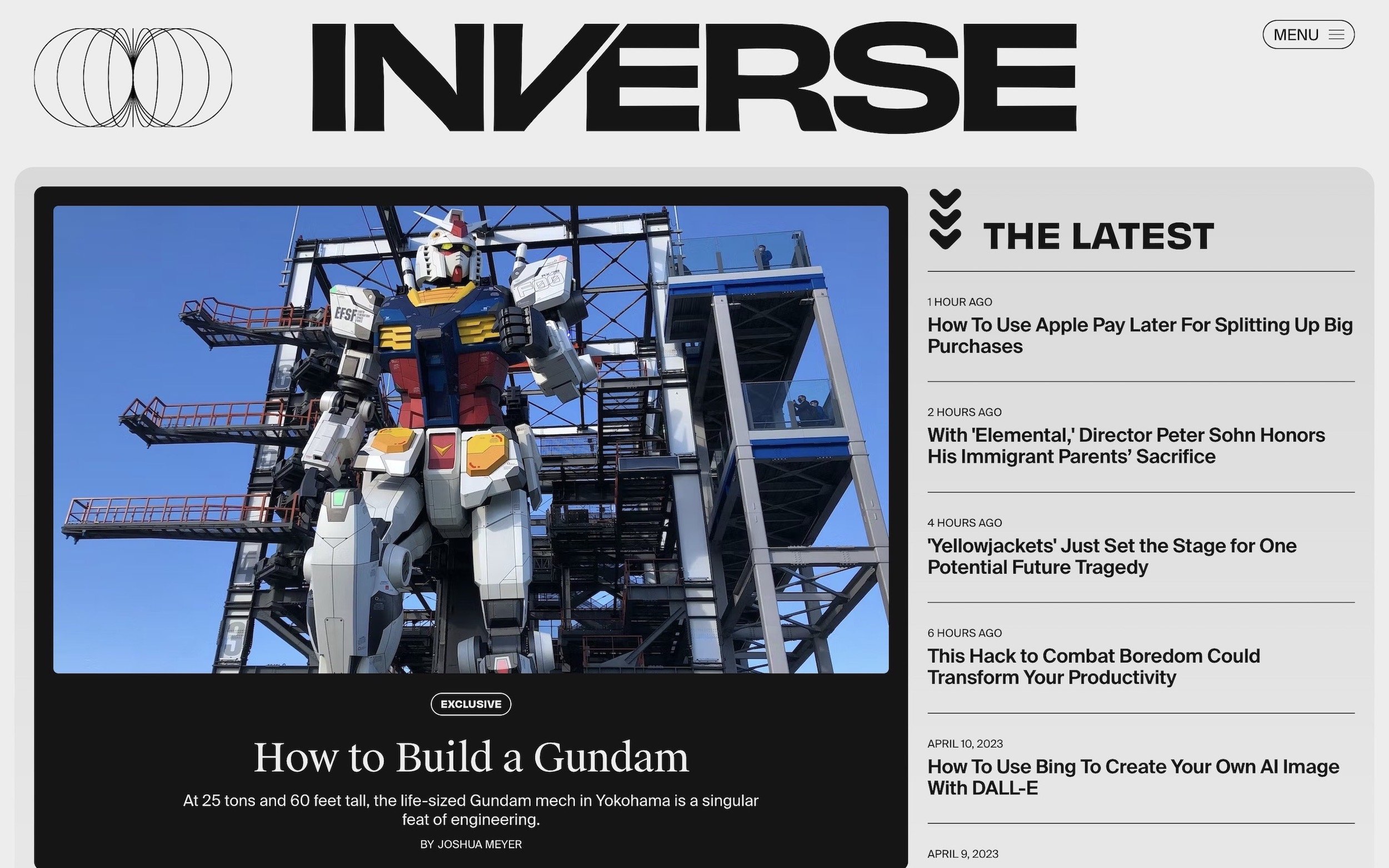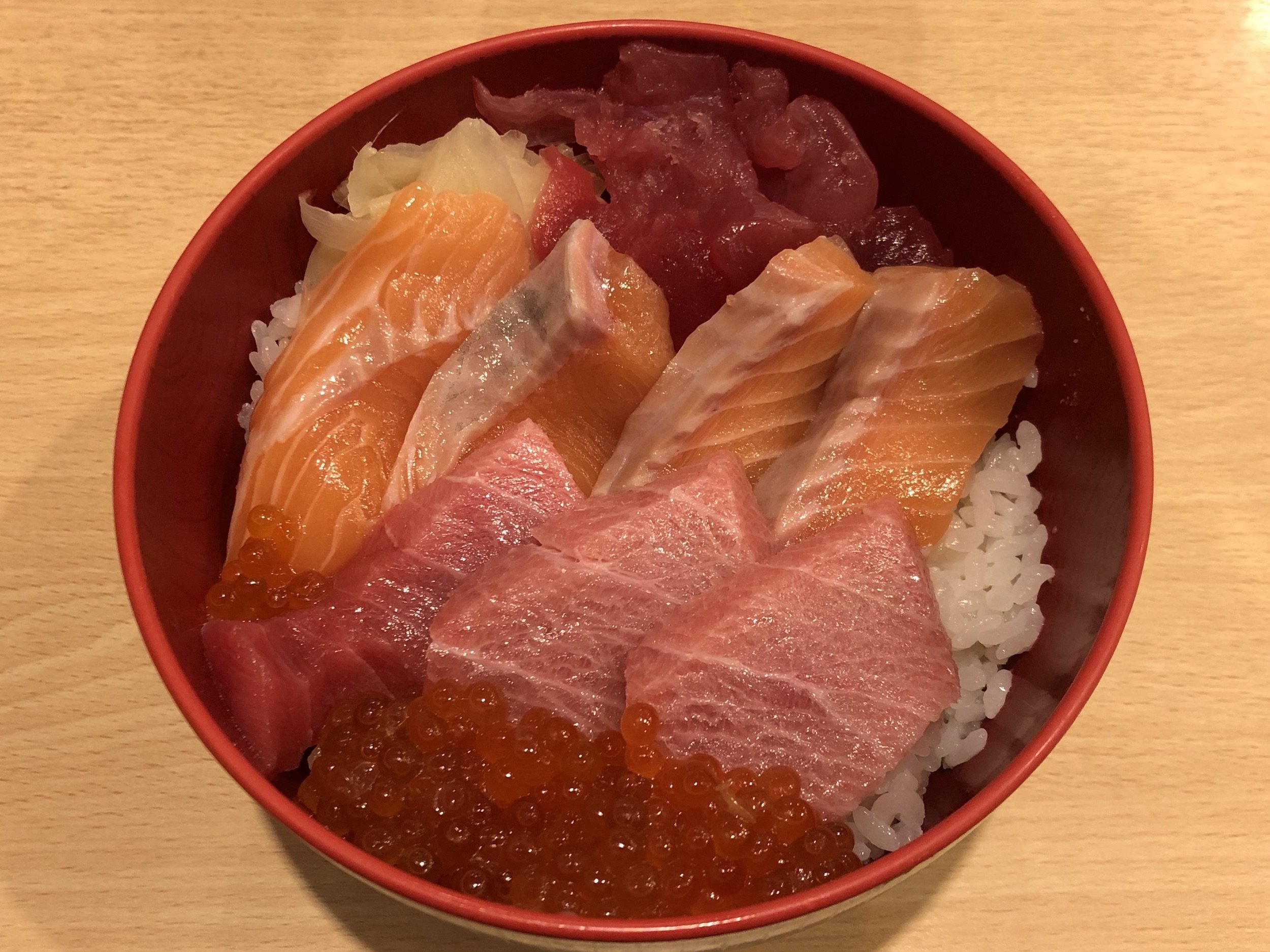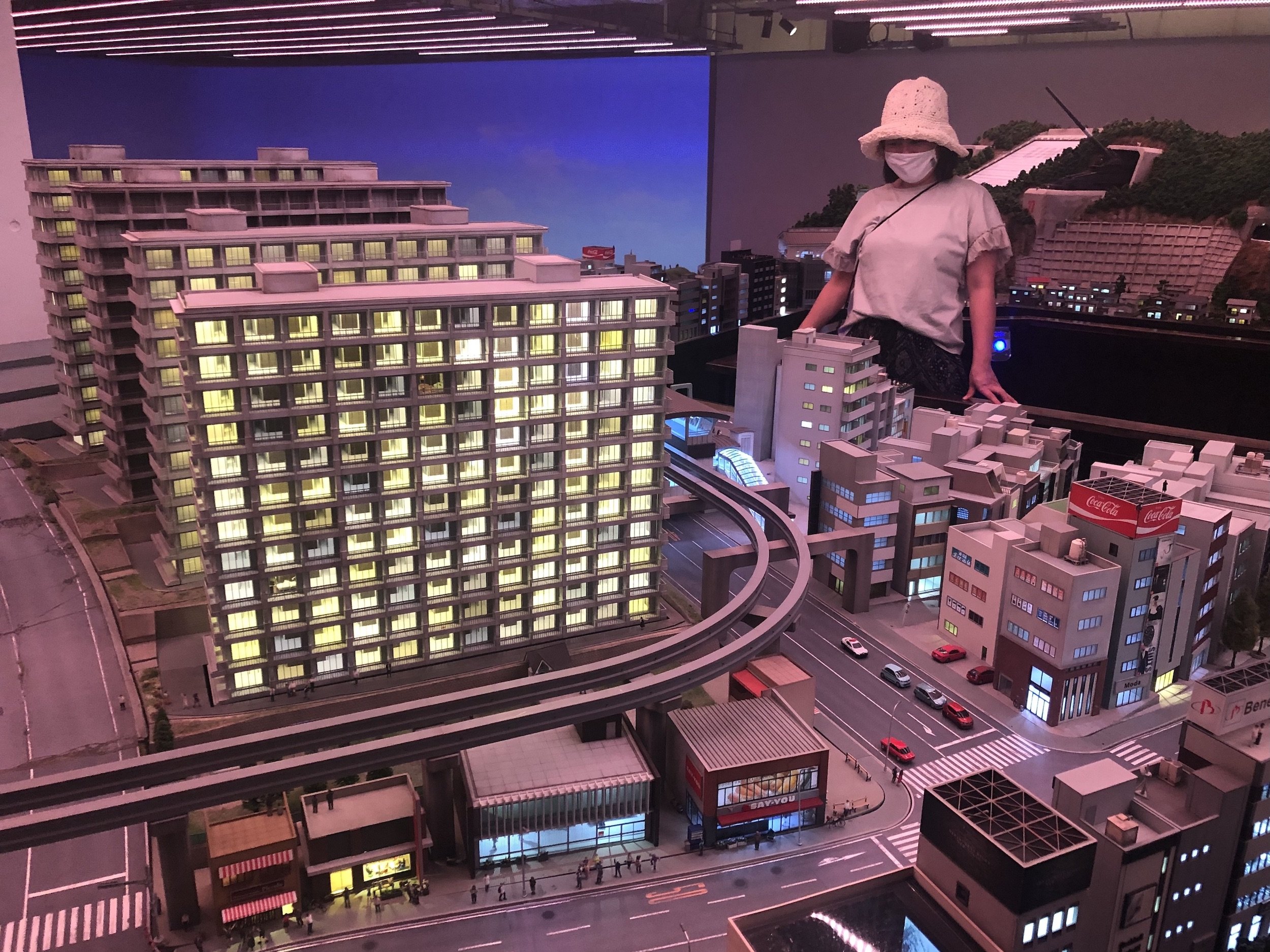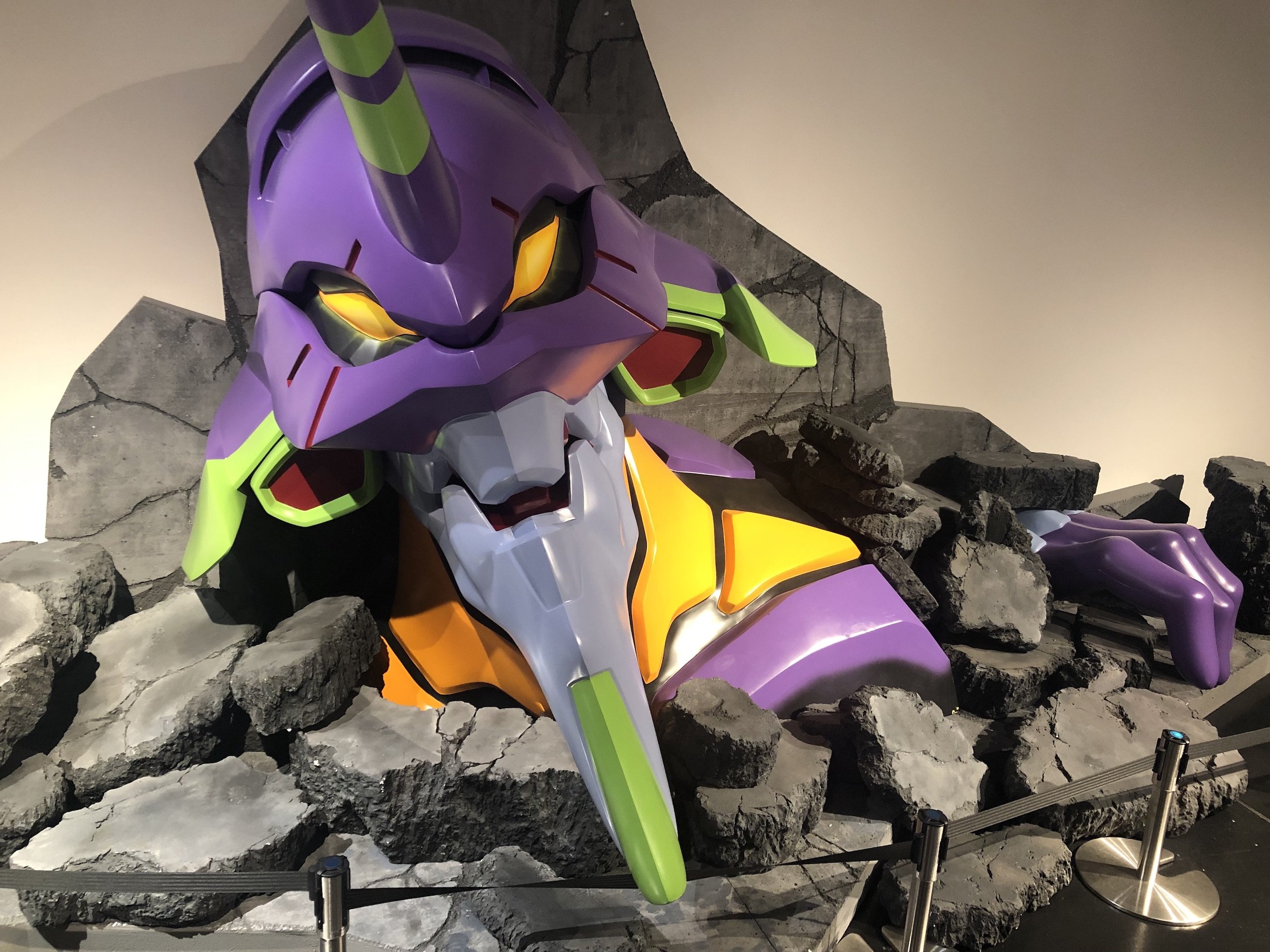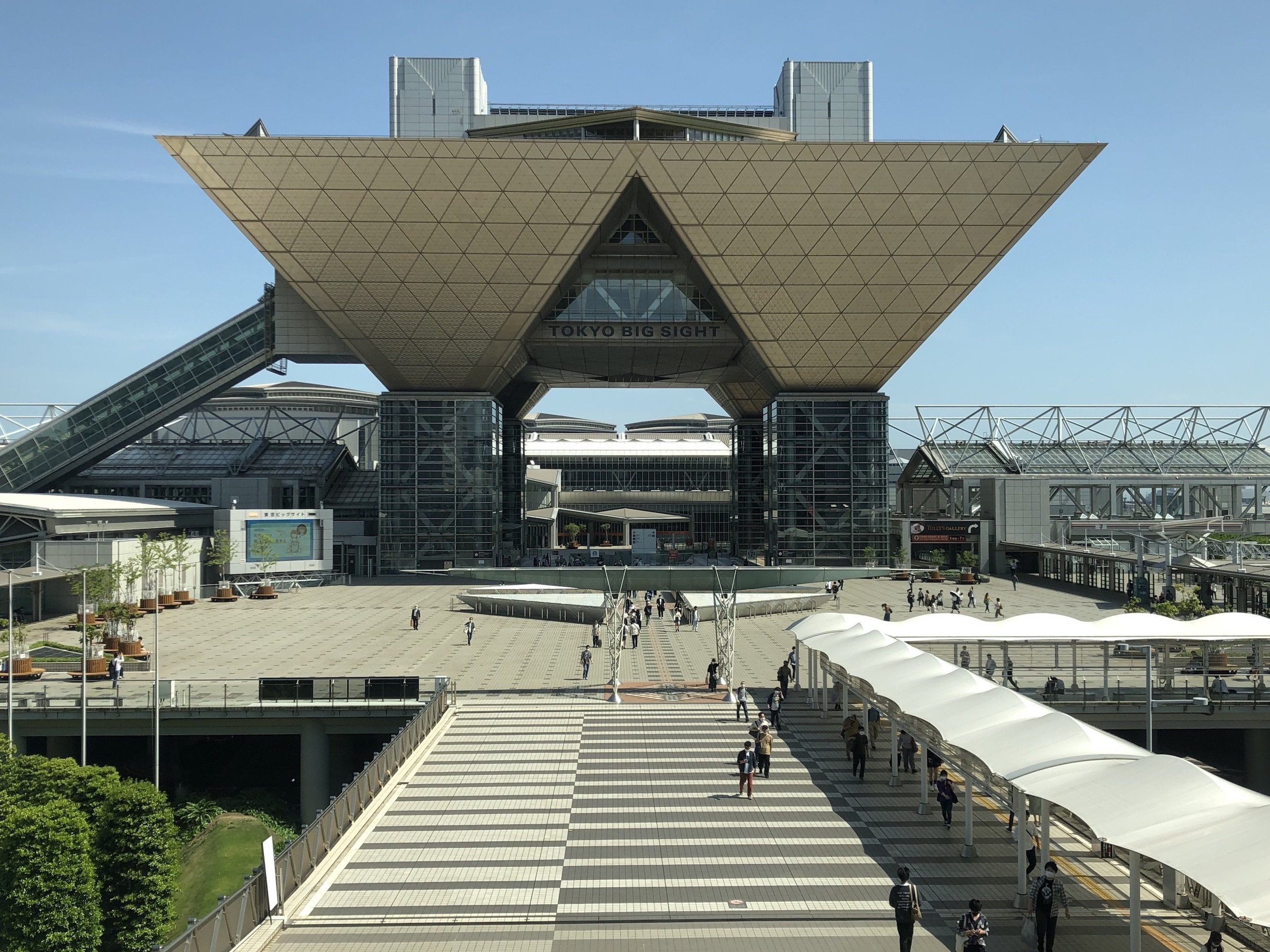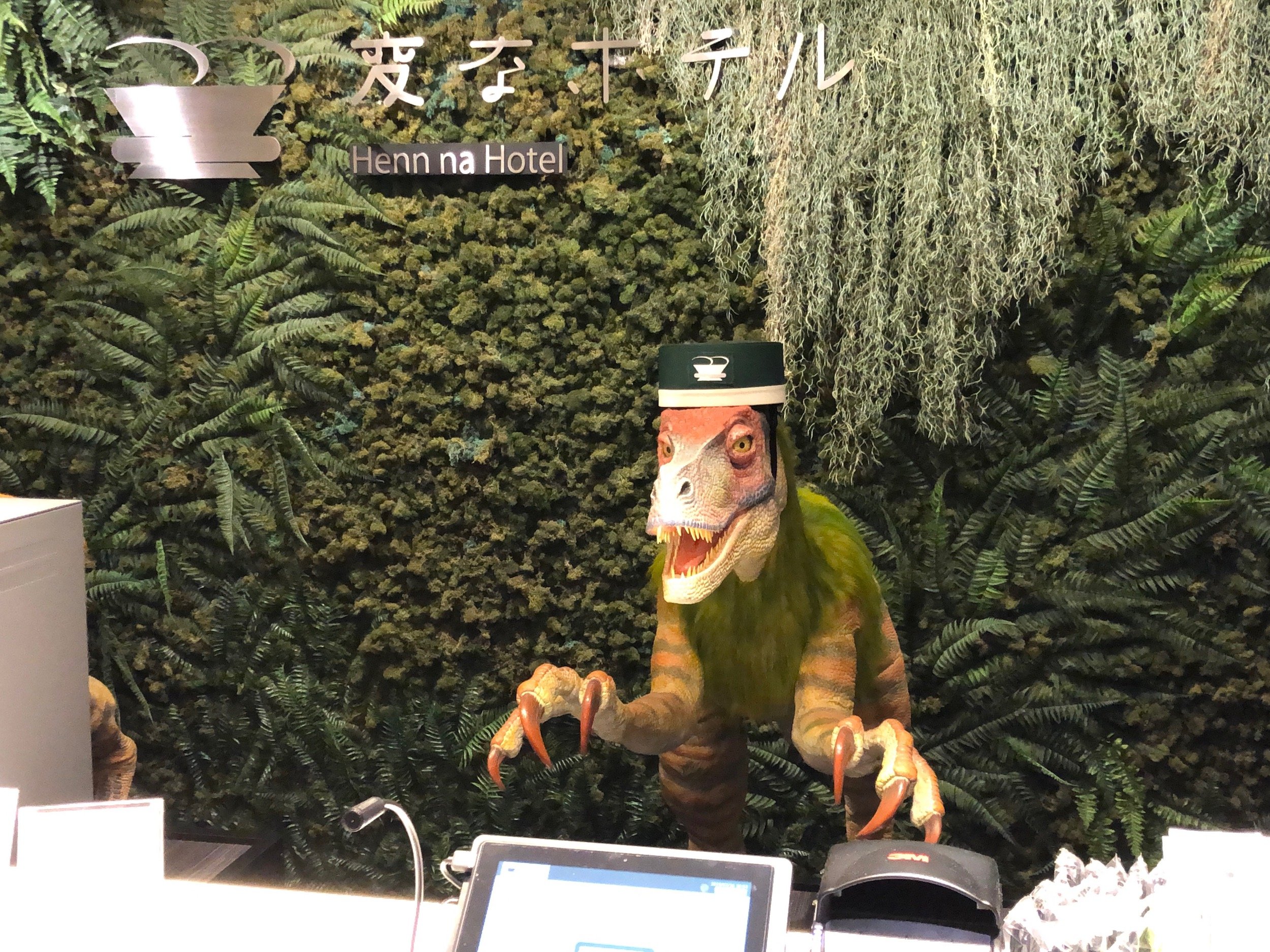As Wikipedia notes, “The Yurikamome is Tokyo’s first fully automated transit system, controlled entirely by computers with no drivers on board.” It links Toyosu, where the old Tsukiji Fish Market relocated in 2018, and where the TeamLab Planets digital art museum is currently operating, with the manmade island of Odaiba across Tokyo Bay. On Odaiba, you can see the Life-Sized Unicorn Gundam statue, among other things.
Like the monorail at Tokyo Disney Resort (officially known as the Disney Resort Line), you can sit in front of the Yurikamome and look directly out the window without any human conductors obstructing the view. That seems like a good starting point for a long and winding post through the spring of 2023, from Toyosu to Odaiba to the robot apocalypse, and everything in-between.
Robots, Robots Everywhere
In recent weeks, everything from the Hollywood writers’ strike, to my own personal robot-related writing assignments, to constant news headlines about AI, has gotten me thinking about the service robots that have already infiltrated everyday life in Tokyo. All around town, you can see them popping up in clinics, restaurants, and train stations.
One recent example is ALSOK’s Reborg-Z security robot, which I’ve seen patrolling the train platform in Shinjuku Station on more than one morning. The sight of commuters brushing past it reminded me of a scene from the pilot episode of the anime series Mobile Suit Gundam: The Witch from Mercury, when a robot named HARO greets a mech pilot at a technology school in space. Other bipedal robots also walk the campus, and we see how the cybernetic Gundam, or GUND-Arm, began as medical technology before the military got ahold of it and repurposed it as a weapon and killing machine.
As reported in Reuters (via Futurism.com), Japan Railway is planning to put a real-life, giant, Gundam-like robot into service fixing power lines next year. It’s just one indication that, in the near future, robots — six stories tall or otherwise — might well play an outsized role in human society.
Another example is SoftBank’s Pepper, a 4-foot humanoid robot that once greeted me as I stepped in the doctor’s office in Hachioji. It was June 2020, but Pepper had already been kicking around for six years, having been “born” in June 2014, according to his page on SoftBank’s website.
He may be much shorter than Gundam, but at the Gundam Factory entertainment venue in Yokohama, Pepper does have a spot on the timeline of robotics development, where it says this particular robot is “sold to the public at a relatively low price of 200,000 yen.”
Taking Over Inverse With a Giant Robot
In April, my article, “How to Build a Gundam,” about said giant robot in Yokohama, was the top story on the Inverse home page. This feature was months in the making. I first alluded to it back in early February when I was blogging about 2022 Tokyo highlights and I ended by saying I was “planning to head back to Yokohama on another assignment, where exploring the Gundam Factory lab is part of the research.”
Two months later, in the final “housekeeping” section of my post on Todaiji Temple in Nara, I also alluded to a new writing opportunity I had brewing. That was Inverse, which covers pop culture from more of a science and technology angle. Hoai-Tran Bui, one of my former editors at /Film, is now the entertainment editor over there.
My first article for Inverse was about Christopher Nolan’s Inception, which happens to be the last movie I saw in a U.S. theater, way back in the summer of 2010, before I left the states to come to Japan. The Gundam article had enough people reading it that a video I shot, which is now embedded in the article, currently has 7.5K views on YouTube. For me, that’s a lot.
Tomorrow, I have another article I’m submitting about a certain 2010 TV finale (which shall remain nameless for now). But enough about that … you came for the Yurikamome ride.
Digital Art at TeamLab Planets Tokyo
One part of the Gundam article mentions “Miraikan, the Tokyo ‘future museum’ where Honda’s human-sized ASIMO robot could once be seen walking, jogging, and even hopping on one leg.” Below, you can see a clip of that from 2015 during Golden Week (Japan’s version of spring break, which lasts from April 29 to May 5).
I was reminded of Miraikan again in Golden Week 2023 when Azusa and I visited TeamLab Planets, the digital art museum in Toyosu, our first stop on the Yurikamome tour. At TeamLab Planets, you can enjoy the sights — though you may not always enjoy the smells — of “a museum where you walk through water, and a garden where you become one with the flowers.”
Since everyone is barefoot, it gets a little stinky, but the whole idea behind this museum is that it’s a place where the boundary between self, others, and art breaks down. For us, that included getting Covid, something we had managed to avoid for three years, thanks in part to the fact that I work remotely from home.
Three days after coming back from the museum — the same Monday Japan downgraded Covid to a flu-level threat — I got sick, and the next day we both tested positive. Talk about breaking down boundaries …
The Floating Flower Garden at Miraikan in 2015. All the other pictures in the gallery above are from TeamLab Planets in Toyosu in May 2023.
TeamLab Planets combines elements of previous exhibitions I had seen at Miraikan and the TeamLab Borderless museum (formerly located in Odaiba, soon to reopen elsewhere in Tokyo). That includes LED crystals, colored spheres, things that look like alien eggs, and the interactive “Floating Flower Garden” installation, where mirrors on the floor reflect orchids overhead.
According to the museum label, orchids were the “last of the flowers to appear” on earth and are therefore “the most evolved plants.” There was no room left for them in the soil, so they evolved to live without it, which is why they’re able to grow mid-air.
Toyosu Fish Market and Small Worlds Tokyo in Ariake
Two stops away from Toyosu on the Yurikamome line is Shijo-mae Station, where you’ll find the Toyosu Fish Market.
Once upon a time, Time Magazine named Toyosu’s bustling predecessor, Tsukiji Fish Market, the #1 thing to do in Tokyo. We used to like eating kaisendon (seafood bowls) there in the outer market, and I pulled an all-nighter once to get a place in line so I could see the famous 5 a.m. live tuna auction. This was back during Golden Week 2016.
Toyosu still has good kaisendon, and there are lookdown windows where you can observe the auction without a reservation, but the restaurant alley is indoors and the atmosphere is more sterile now.
The next stop after Shijo-mae is Ariake-Tennis-no-Mori Station, which is where the Small Worlds Tokyo indoor miniature theme park is located. I wrote about it in an article for GaijinPot last October, covering 5 new places to see in Tokyo on your next trip.
Not to be outdone by Gundam, Small Worlds Tokyo has a Neon Genesis Evangelion statue out front, along with a giant Eva head that was once on display in Tokyo Skytree. As I wrote in my article, it also has “a working hangar with launching mechs and a room with a full mock-up of the Tokyo-3 cityscape.”
In March, at Ariake, the next stop on the Yurikamome line, we went to see the Gekidan Shiki theater company’s 25th-anniversary, Japanese-language performance of the Broadway musical The Lion King. I had seen the same show once in Times Square, Manhattan, circa 2001, but I was standing at the back, and this time we had much better seats right up front.
Tokyo Big Sight, the Telecom Center, and Miraikan
After Ariake, the Yurikamome will take you to Tokyo Big Sight, recognizable from the four inverted pyramids that make up its conference tower.
This is where the annual Comiket convention is held. It’s a curious confluence of shutterbugs, video game mascots, men in military costumes, and women in manga- and anime-inspired getups.
On New Year’s Eve 2015, I saw some guys dressed up as Gundam, Char Aznable, and the villainous Zabi family at Comiket. The one cosplaying as Gihren Zabi held up his hand in a “Sieg Zeon!” salute as I was taking the picture, and I’m not sure if he appreciated the full Nazi implications of that gesture. Or maybe I read it wrong and he was just gesturing “Stop!” to ward off paparazzi.
The Yurikamome continues on to the Telecom Center, which has an observation deck and is within walking distance of Miraikan, where ASIMO and TeamLab’s Floating Flower Garden once held court.
Miraikan means “future museum.” It’s shorthand for the National Museum of Emerging Science and Innovation. Not to go overboard with otaku stuff, but this was also the venue for “The Art of Disney” exhibit, which explored the history of Disney animation and which I wrote about for TDR Explorer back in 2017.
Mexican Food and Gundam in Unicorn Mode
In a previous version of “Japan’s Life-Sized Gundam, Through the Years” (which remains one of the more popular posts on this blog, traffic-wise), I said that I had yet to see Odaiba’s Life-Sized Unicorn statue during the day when it was in actual Unicorn Mode. I believe my exact words were, “I should probably hightail it over there [to Odaiba] again sometime or else risk losing my Gundam street cred.”
I have since rectified my lack of Unicorn Mode sightings—twice. The first time was in March when we went to see The Lion King stage musical. The second time was over Golden Week when we visited TeamLab Planets.
It was Cinco de Mayo, and the last day of the 4th annual Road to Latin America Festival was underway outside Daiba Station. This is our last stop on the Yurikamome tour. In Spanish, the event is advertised as Festival de Camino a Latinoamérica, or Festival of Latin American Food.
We ate some very spicy tacos and then made our way over to another nearby food festival, Niku Fes (“Meat Fest”), to split a meat pie and share a small plate of truffle-flavored steak. Along the way, we had to run a gauntlet of graphic signs of animal slaughter, posted by vegan protesters, who understandably weren’t thrilled about Tokyo holding a meat festival.
DiverCity Tokyo Plaza, the mall where the Life-Sized Unicorn Gundam statue stands, also has a Mexican restaurant with a skate park called Wahoo’s. It hails from California originally. Azusa and I had wet burritos there in March after The Lion King, but she wasn’t impressed with it compared to some of Tokyo’s other Mexican restaurants.
It did give me an opportunity, though, to see Gundam in true Unicorn Mode (and at twilight in Destroy Mode), and the aforementioned post has since been updated with a few new pictures. Now, we can close the book on Gundam.
“LOVE” and Other Signs En Route to Tokyo Teleport
After leaving DiverCity, we walked over to Tokyo Teleport Station and took the train back to Shinjuku. Along the way, we saw the tent for Cirque de Soleil, which has a show called Alegria running at Odaiba Big Top until June 25, 2023.
The circus helps make up for the lifelessness at the former Palette Town and Venus Fort shopping mall site. The giant Ferris wheel at Palette Town is now gone and the signage has been stripped away from the Venus Fort building. Less than a year ago, they were both still there, which made for a scenic backdrop to the TOKYO sign near the station. You can see the “before” and “after” above (and you might recognize the “before” picture from earlier this year).
Speaking of signs with words and place names in big letters — a trend I address further in my post on the “Be Kobe” monument — I noticed a couple more of those in Odaiba in March. One is a rainbow-colored “LOVE” sign outside the Aqua City Odaiba mall. The backdrop, appropriately, is the Rainbow Bridge and Odaiba’s replica of the Statue of Liberty.
The other sign is one for Odaiba Seaside Terrace, which you’ll see further down the boardwalk, on the way to the restaurant Bill’s, where we enjoyed black sesame milkshakes and “Full Aussie” breakfasts this spring. Around the corner from Bill’s is Odaiba-kaihinkoen Station on the Yurikamome line. (Kaihinkoen means “Seaside Park.”)
Before the Yurikamome station is the walkway that will take you around to Tokyo Teleport Station from the back side, thereby completing our pedestrian loop around Odaiba.
Robot Receptionists at Henn na Hotel
The Rinkai/Saikyo Line runs between Tokyo Teleport Station and Shinjuku, but if we had ridden it the other direction, we would have hit the terminus of Shin-Kiba Station, just three stops away from Tokyo Teleport. From there, you can change trains to the Keiyo Line, and be at Maihama Station and Tokyo Disney Resort in another two stops.
Suffice it to say, there are plenty of animatronics to see at Disney, and plenty of other robots to see even beyond that. Walking in on Softbank’s Pepper at the doctor’s office in 2020, for instance, reminded me of that time the summer before when I checked into the Henn na Hotel Maihama Tokyo Bay, where the reception desk was manned by a robotic velociraptor. I was staying there before a trip to Tokyo DisneySea, which I wrote about in my summer 2019 photo report for WDW News Today. (Alas, it’s now missing the photos.)
The difference is, you know you’re in for something weird and robotic when you stay at the Henn na Hotel chain, because it’s part of the theming. Henn denotes “strange” in Japanese, and the Nagasaki branch of Henn na Hotel boasts the novelty of being the world’s “first robot-staffed hotel,” per Guinness World Records.
In Ginza and other places across Tokyo, the hotel also has branches with humanoid robot receptionists. Who knows, if you show them a photo, maybe they’ll react like one of the robotic hosts on HBO’s Westworld. “Doesn’t look like anything to me.”
The Robot Apocalypse in Westworld (and the Real World)
Speaking of Westworld, in April, I caught up with the fourth and final season of that show (and wrote about it here and here) as HBO Max exiled it to the Roku streaming service, where it’s now available to watch for free with ads.
Spoiler alert …
Westworld ends with the robot apocalypse. Humanity, already enslaved by self-aware hosts, tears itself apart as nanobot flies and discordant musical tones control people’s minds and program them to self-destruct like fleshy androids.
Given that Westworld was canceled in November 2022, the same month ChatGPT was released, it almost seems ahead of its time now. In a statement at the time, co-showrunner Jonathan Nolan (Christopher Nolan’s brother) even joked about how the show’s creative team was privileged to tell “stories about the future of consciousness — both human and beyond — in the brief window of time before our AI overlords forbid us from doing so.”
I said it before and I’ll say it again: what if the AI canceled Westworld for accurately predicting the future?
Support the WGA, Not AI
That seems like a good note to end on: the apocalypse, hastened by AI. It’s probably where we’re headed. Westworld is hardly the first science fiction work to predict it; there’s also Skynet in Terminator 2: Judgment Day, for example.
Consider what Microsoft co-founder Bill Gates declared on his blog in March: namely, that “The Age of AI has begun.” Gates had witnessed the ability of an OpenAI-trained artificial intelligence to pass an Advanced Placement biology exam, and he called it one of two demonstrations of truly revolutionary technology that he’s seen in his lifetime.
The advent of ChatGPT has us all worried, and by “us,” I mean writers like me who risk becoming obsolete when the powers that be decide they can just as easily train a monkey an AI to do their job, with no one in the human world being any the wiser, apparently. The recent advances in AI technology are alarming for other reasons, of course, but for movie news bloggers who are already stretched thin, and whose choice of writing topics is already dictated by search algorithms, the outlook might be especially grim.
As I say on my Inverse author page, I “would just like not to be made obsolete by AI writing.” That’s part of what the Writers Guild of America (WGA) is fighting for now with its strike in Hollywood. Permalance (which is to say, permanent freelance) bloggers like me are part of the same gig economy, and we face the same existential crisis when it comes to AI.
When you have AI luminaries writing open letters for Time about how artificial intelligence poses an “extinction risk” for humanity, maybe it’s time to consider shutting down all developments, like he says, or at least pause them long enough to regulate them better.
It’s enough to make a person second-guess whether screenwriting is still a valid pursuit. Just last year, I had a script place ahead of 10,000+ others as a semifinalist in the Austin Film Festival, one of the top two screenwriting competitions. I used to fantasize about writing a novel and having it adapted into a film, but when I wrote that script, I figured I’d just eliminate the middle step and skip straight to telling the story in screenplay form. Now, I wonder if maybe I shouldn’t just go back to writing prose.
Support the WGA?!
